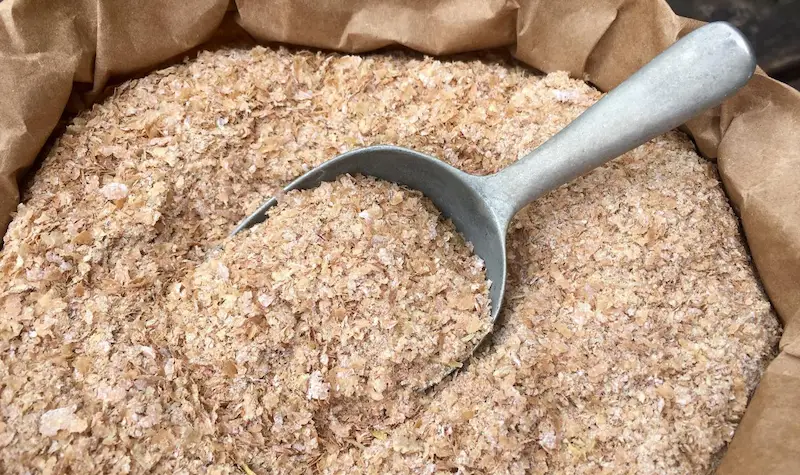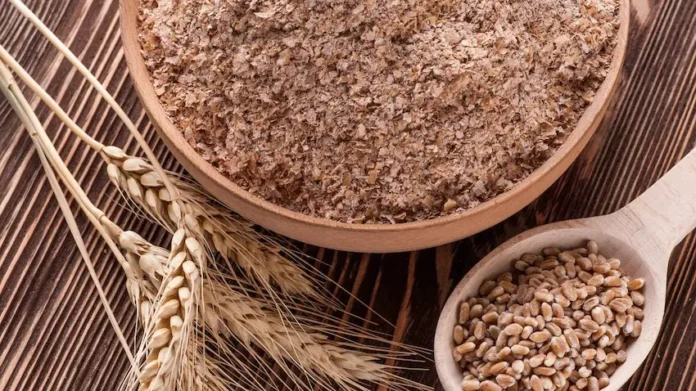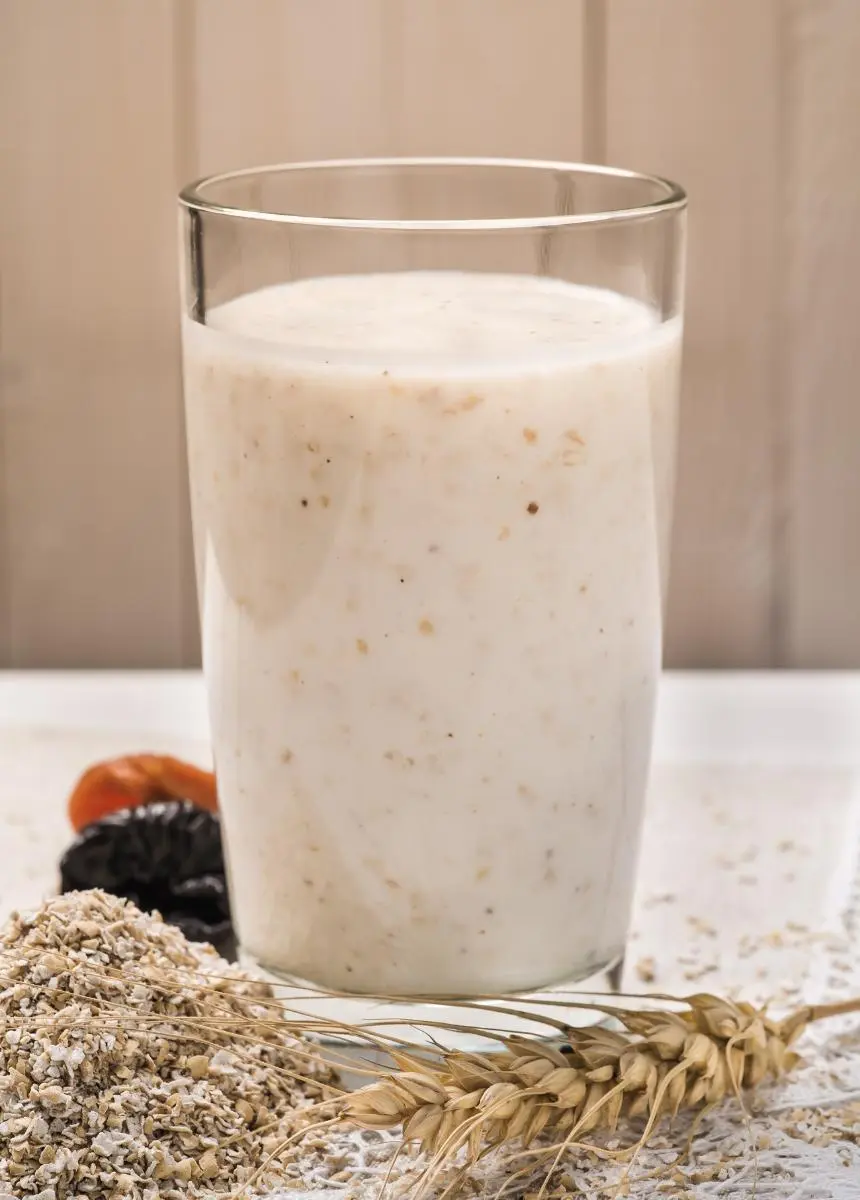Searching for that one ingredient that’ll turn your meals into nutritional powerhouses? Say hello to wheat bran! This understated hero not only brings a parade of vitamins and minerals to your plate but also serves up a generous helping of proteins, carbohydrates, and plant fibers. And the best part? It does all this while keeping those sneaky fats under control. Consider this your dietary MVP!
Now, if you’re wrestling with problems like stubborn digestion, unwanted pounds, upset stomach, or even gastritis and constipation – guess what? Bran comes to the rescue. Yep, this unassuming foodstuff is pretty much a natural wonder remedy that’s ready to roll up its sleeves and get to work.
And the best part? Getting bran onto your plate and into your system is as easy as pie. Just soak it in some yogurt, milk, tea, or juice until it plumps up, and you’re all set!
But don’t be fooled, there’s much more to bran than this enticing introduction. In this article, we’ll pull back the curtain on bran’s multitude of uses, demystifying why it’s such an indispensable addition to your kitchen. Brace yourself as we embark on a comprehensive expedition into the captivating world of wheat bran.
Versatile Uses of Wheat Bran in Your Diet
Wheat bran’s versatility goes beyond the common usage in baking bread or adding to breakfast cereal. This nutrient powerhouse can easily become an integral part of your diet, enhancing both the flavor and nutritional profile of your meals.
In baking, wheat bran can be a healthy addition to muffins, pancakes, waffles, and cookies, providing a delightful, nutty flavor and extra crunch. It’s a fantastic way to boost the fiber content of your baked goods.

If you’re a fan of smoothies, sprinkle in some wheat bran to increase the texture and make your morning blend even more nutritious. It can be effortlessly incorporated into yogurt, smoothies, or oatmeal without altering the taste significantly.
For a fiber-rich twist to your traditional recipes, consider adding wheat bran to your meatloaf, burger patties, or casseroles. This addition not only improves the nutritional value but also aids in moisture retention, giving a juicier end result.
You can also experiment with using wheat bran as a healthier breading for chicken, fish, or vegetables. It adds a crispy exterior while keeping the meal low in calories.
Wheat Bran: Nutritional Powerhouse Unveiled
When it comes to nutrition, wheat bran is an unsung hero. It’s not only packed with an abundance of dietary fiber, but it’s also a remarkable source of various essential nutrients, vitamins, and minerals. Let’s dive into the details and unpack the nutritional profile of these healthy foods.
Nutritional Value of Wheat Bran per 100g:
| Nutrient | Amount |
|---|---|
| Calories | 216 kcal |
| Protein | 15.55 g |
| Total Fat | 4.25 g |
| Carbohydrate | 64.51 g |
| Dietary Fiber | 42.8 g |
| Sugars | 0.41 g |
| Iron | 10.57 mg |
| Magnesium | 611 mg |
| Phosphorus | 1,011 mg |
| Potassium | 1,181 mg |
| Zinc | 7.27 mg |
| Thiamin (B1) | 0.523 mg |
| Riboflavin (B2) | 0.577 mg |
| Niacin (B3) | 13.578 mg |
| Vitamin B6 | 1.303 mg |
| Folate (B9) | 79 µg |
| Vitamin E | 1.17 mg |
| Vitamin K | 3.6 µg |
Please note that these values are averages and actual values may vary depending on the brand and preparation method. It’s always best to check the nutritional information on the packaging of the product you purchase.
Indeed, choosing wheat bran boosts your intake of nutrient-rich food. It promotes digestive health and leads to a healthier lifestyle. Not surprisingly, this humble ingredient is earning its well-deserved reputation in health and wellness circles.
Wheat Bran as a Remedy
Bran is packed with an abundance of vitamins and minerals that are crucial for our health and strengthening the body. It also contains a high percentage of proteins, carbohydrates, and plant fibers, and a low percentage of fats. Bran is the best natural remedy for digestion, weight loss, stomach ailments, gastritis, and constipation…
Wheat bran can be eaten with yogurt, milk, tea, or juice by soaking it until it swells and is ready to eat. The therapeutic powers of this versatile foodstuff underline its incredible value in maintaining and promoting health.
Bran Poultices
Making a bran poultice is simple. Start by adding wheat bran, or the crustless part of a whole grain black bread, to a liter of boiling milk. Mix in one egg yolk and voila! You have your poultice, a paste-like mixture ready for use.
This paste serves as a local remedy for various conditions. These include ulcers or furuncles, abscesses (pus-filled swellings), phlegmons (inflamed tissue due to pus and pain), and anthrax, commonly known as black carbuncles. The poultice works by drawing out and eliminating pus, and it also alleviates joint pain, particularly in the knees. The simplicity and effectiveness of this DIY remedy underline the natural healing properties of commonplace ingredients such as bran.
Wheat Bran Porridge
Looking to whip up a healing porridge? Here’s what you’ll need: 5 crushed cabbage leaves, 2 heads of squashed black onion, 5 handfuls of wheat bran, and just a splash of water. Simmer this blend for 20 minutes until the water has vanished, leaving a grainy paste. Apply this hot poultice to a cloth, gently place it on the affected area, and leave it be for a span of 2 to 4 hours.
Wheat bran Tea
Wheat tea? Yes, you read right! This underrated brew is a powerhouse in combating arthritis and easing those pesky rheumatic pains. Wave goodbye to the aches in your bones and joints brought on by these conditions. And that’s not all. Some even suggest that this wonder drink could step into the ring with certain cancers, slowing the advance of rogue cells. Above all, it’s a potent preventive shield against this formidable foe.
Ingredients needed for tea:
- 500g of wheat bran
- 200ml of honey
- 800ml of water
To prepare the tea, thoroughly wash the wheat in water and dry it on a paper surface. Then, put it in a pan. Toast the wheat grains until they start to crackle, stirring constantly. Transfer the toasted wheat grains into a teapot and pour over boiling water. Continue simmering for 25 minutes on low heat, then remove from the stove and cover. Let it rest for five minutes before adding honey. After this, the tea is ready for consumption.
Important Safety Considerations
While bran offers an array of health benefits, it’s also crucial to take note of some safety considerations when incorporating it into your diet. For individuals with specific health conditions or dietary restrictions, it may be necessary to consult a healthcare professional before making significant changes to your diet. Additionally, as with any high-fiber food, increasing your consumption of bran should be done gradually to allow your body to adjust and to prevent potential digestive discomfort. Remember, maintaining balance and moderation in your diet is key to reaping the full health benefits of this nutritional powerhouse.
Frequently asked questions from other readers
- Is wheat bran good to eat?
Yes, wheat bran is indeed good to eat. It’s a power-packed food rich in nutrients such as vitamins, minerals, and dietary fiber. A great choice for anyone wanting to boost their health. - How to eat bran for constipation?
Wheat bran is effective in relieving constipation due to its high fiber content. It can be added to cereal, blended into smoothies, mixed with yogurt, or even incorporated into baked goods. - Wheat bran benefits
Wheat bran offers a range of health benefits. From improving digestive health to aiding weight loss and enhancing overall wellness, its nutrient-rich profile makes it a valuable addition to your diet. - Does wheat bran have gluten?
Yes, wheat bran does contain gluten. It’s a part of the wheat grain, making it unsuitable for those with celiac disease or on a gluten-free diet. - How is wheat bran also known?
- Wheat bran is also recognized as “Miller’s Bran” or “Common Wheat Bran.” This nutrient-packed outer layer of wheat grain is recognized globally for its various health benefits.

